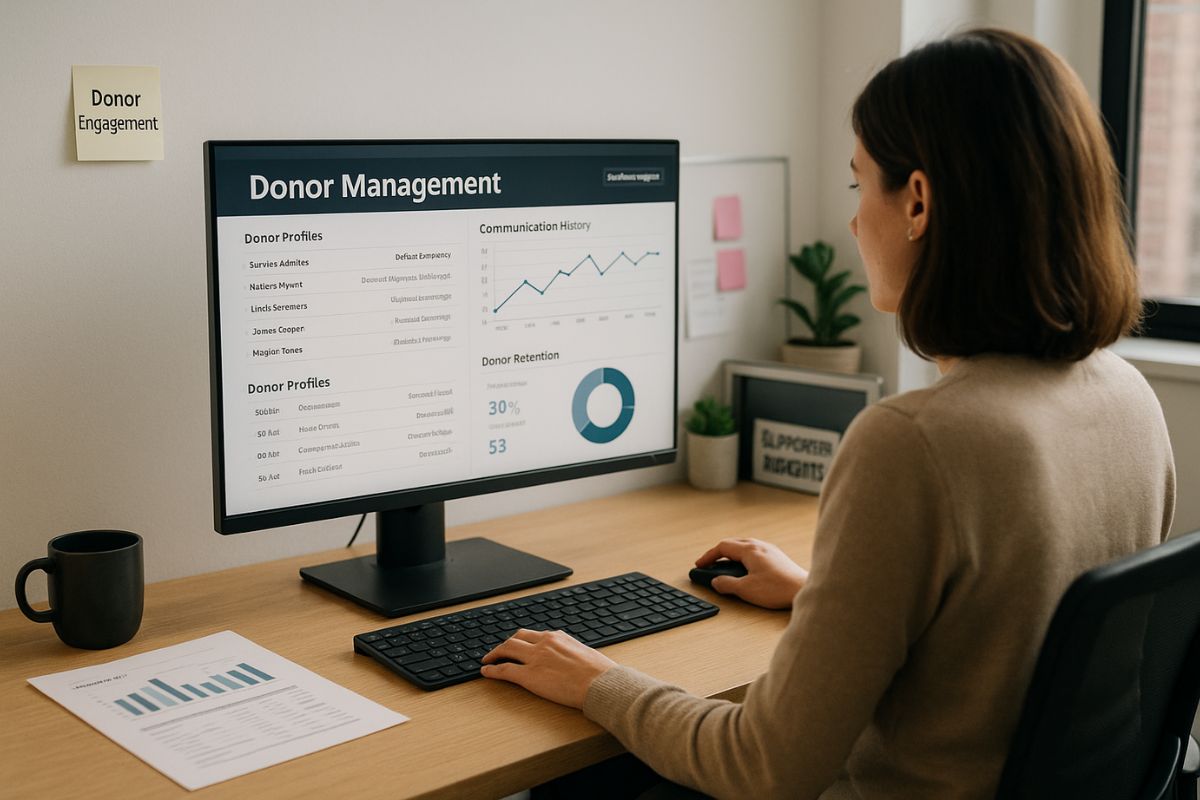
Use CRM Systems for Donor Management
Donors are not just names on a spreadsheet. They’re people who believe in your mission and want to help you succeed. Building real relationships with them takes more than a few thank-you emails. That’s where a CRM system becomes useful—not as a tech upgrade, but as a tool to keep your donor community strong and engaged.
CRM stands for Customer Relationship Management, but in the nonprofit world, it’s better thought of as a Donor Relationship Tool. It helps your team stay organized, track conversations, and personalize the way you communicate with supporters. Whether your organization has five funders or five thousand, a CRM helps you stay focused on what matters most—connection.
Why CRMs Help You Work Smarter
Many small nonprofits manage their donors with spreadsheets. That works fine at first. But as your list grows, it gets harder to keep track. Who gave last year? Who prefers phone calls over email? Who’s waiting for a response about a recent event?
With a CRM system, that information lives in one place. It shows giving history, communication preferences, and notes from every team member. This way, no one’s left wondering when the last touchpoint was or what was said.
A CRM doesn’t just hold data. It helps you act on it. You can group donors by interest, send targeted updates, and plan campaigns that match each person’s giving style.
Build Personal Connections at Scale
Supporters want to feel valued. They don’t want a generic message that feels copied and pasted. A CRM helps your team avoid this by allowing personalization—even in bulk messages.
You can filter donors by their giving history, region, or past events attended. Then, tailor your message to match. Someone who donates every December might appreciate a thank-you note before the holiday appeal goes out. A former volunteer might be excited about a behind-the-scenes update.
These small personal touches make a big difference. They show that your organization sees donors as part of the team—not just a funding source.
Make Team Collaboration Easier
In many nonprofits, different people handle different parts of the donor experience. One person might write the newsletter. Another might manage grants. A third may handle thank-you calls. Without a shared system, it’s easy to step on toes—or worse, forget a key task.
A CRM helps everyone stay aligned. When someone logs a note about a phone call, the next team member sees it. When a donor asks to pause emails for a month, that preference is clear to all.
This shared visibility builds consistency. It also saves time, avoids repeated questions, and helps donors feel respected across every interaction.
Simplify Campaign Planning and Follow-up
Fundraising campaigns take planning. A CRM lets you see who gave last year, who hasn’t yet responded, and who might need a personal follow-up. Instead of starting from scratch, your team begins with a map of what’s been tried and what worked.
You can also create reminders to follow up after events, send handwritten thank-yous, or re-engage lapsed donors. Some CRMs even let you automate messages or segment responses based on donor behavior.
This turns good intentions into actions. No more forgetting to follow up. No more scrambling for addresses. Just clear, trackable steps that support your goals.
Gain Clarity with Real-Time Reporting
Board meetings, grant applications, and year-end reviews all require data. A CRM helps you generate reports without the scramble. You can track donations over time, measure retention, and spot giving patterns.
This insight supports better decisions. Maybe you see that small recurring gifts bring in more over time than one-time donations. Maybe you learn that a new welcome email led to higher engagement. With this knowledge, your next campaign gets smarter.
Even better, this clarity builds trust with funders and stakeholders. You can show that your team knows what’s working—and is ready to adapt when needed.
Keep Your Data Safe and Organized
Donor trust is a big deal. When people share their information, they expect it to be protected. Most CRM systems include safeguards to keep data secure. They also make sure your team is following best practices around data access and privacy.
Beyond safety, organization matters. When contact lists live in several places, mistakes happen. A centralized CRM keeps everything tidy, so your team knows exactly where to look.
If someone moves to a new role, they won’t need to dig through old folders or ask around. The CRM holds the history, so the relationship can continue without a pause.
And when it’s time to onboard new team members, a CRM becomes a built-in training tool. With all past interactions, notes, and updates in one place, newcomers can get up to speed quickly—no need to reinvent the wheel or risk dropping the ball on key relationships.
Grow with Confidence
As your nonprofit grows, so does the need for structure. You might start with a small system and later expand to track grants, event attendance, or volunteer hours. Many CRMs offer flexibility, allowing you to scale as your work evolves.
What starts as a simple donor list becomes a powerful tool for relationship-building, planning, and reflection. It frees up your team to focus on what they do best—advancing the mission—while the system takes care of the rest.
Donor relationships thrive on consistency, care, and communication. A CRM doesn’t replace the human side of giving—it supports it. By using the right system, your team can keep supporters informed, appreciated, and part of the story you’re building together.
